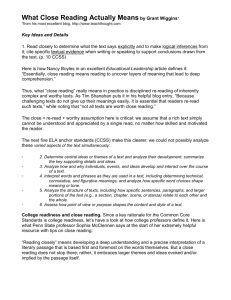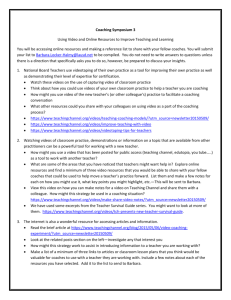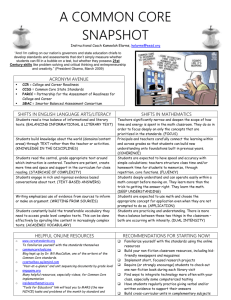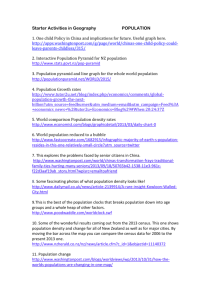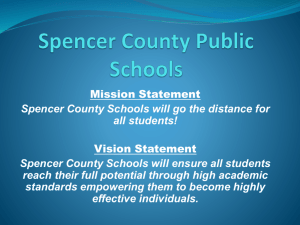CCC 20 Close Reading Strategies
advertisement
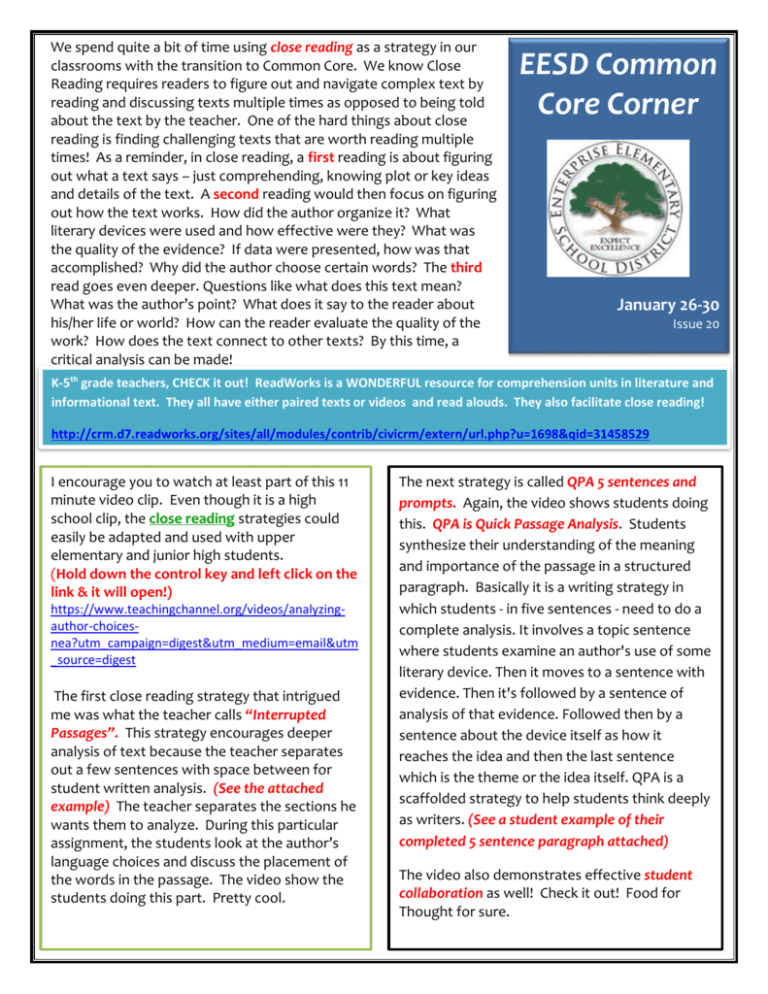
We spend quite a bit of time using close reading as a strategy in our classrooms with the transition to Common Core. We know Close Reading requires readers to figure out and navigate complex text by reading and discussing texts multiple times as opposed to being told about the text by the teacher. One of the hard things about close reading is finding challenging texts that are worth reading multiple times! As a reminder, in close reading, a first reading is about figuring out what a text says – just comprehending, knowing plot or key ideas and details of the text. A second reading would then focus on figuring out how the text works. How did the author organize it? What literary devices were used and how effective were they? What was the quality of the evidence? If data were presented, how was that accomplished? Why did the author choose certain words? The third read goes even deeper. Questions like what does this text mean? What was the author’s point? What does it say to the reader about his/her life or world? How can the reader evaluate the quality of the work? How does the text connect to other texts? By this time, a critical analysis can be made! EESD Common Core Corner January 26-30 Issue 20 K-5th grade teachers, CHECK it out! ReadWorks is a WONDERFUL resource for comprehension units in literature and informational text. They all have either paired texts or videos and read alouds. They also facilitate close reading! http://crm.d7.readworks.org/sites/all/modules/contrib/civicrm/extern/url.php?u=1698&qid=31458529 I encourage you to watch at least part of this 11 minute video clip. Even though it is a high school clip, the close reading strategies could easily be adapted and used with upper elementary and junior high students. (Hold down the control key and left click on the link & it will open!) https://www.teachingchannel.org/videos/analyzingauthor-choicesnea?utm_campaign=digest&utm_medium=email&utm _source=digest The first close reading strategy that intrigued me was what the teacher calls “Interrupted Passages”. This strategy encourages deeper analysis of text because the teacher separates out a few sentences with space between for student written analysis. (See the attached example) The teacher separates the sections he wants them to analyze. During this particular assignment, the students look at the author’s language choices and discuss the placement of the words in the passage. The video show the students doing this part. Pretty cool. The next strategy is called QPA 5 sentences and prompts. Again, the video shows students doing this. QPA is Quick Passage Analysis. Students synthesize their understanding of the meaning and importance of the passage in a structured paragraph. Basically it is a writing strategy in which students - in five sentences - need to do a complete analysis. It involves a topic sentence where students examine an author's use of some literary device. Then it moves to a sentence with evidence. Then it's followed by a sentence of analysis of that evidence. Followed then by a sentence about the device itself as how it reaches the idea and then the last sentence which is the theme or the idea itself. QPA is a scaffolded strategy to help students think deeply as writers. (See a student example of their completed 5 sentence paragraph attached) The video also demonstrates effective student collaboration as well! Check it out! Food for Thought for sure. Since the video clip is from the Teaching Channel, you can see the entire lesson plan and other strategies used in the lesson. As always, there are many new videos to see on the Teaching Channel for all grade levels and content areas. I recommend you regularly check Teachingchannel.com when you have a few minutes! There is always something great to see, and different ideas to try. Be sure to let me know when your special events and CC activities are so I can come take pictures! The above pictures are from last year’s MARCH MADNESS activities at ROTHER! It was AWESOME. I’d love to come see what is going on at your school! Queen Russell hosts her second annual PANCAKE ART DAY! Check out the artistry! Nice long-eared dog, Terri! We are impressed. Teachers and students alike get to participate and vote to see who wins the prize for the most creative entry! (AND EAT YUMMY PANCAKES!)

